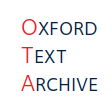This item is
Attribution-ShareAlike 3.0 Unported (CC BY-SA 3.0)
Publicly Available
and licensed under:Attribution-ShareAlike 3.0 Unported (CC BY-SA 3.0)
Files for this item
Download all local files for this item (4.69 MB)

- Name
- 3061.epub
- Size
- 431.99 KB
- Format
- EPUB
- Description
- Version of the work for e-book readers in the EPUB format

- Name
- 3061.html
- Size
- 1013.91 KB
- Format
- HTML
- Description
- Version of the work for web browsers

- Name
- 3061.mobi
- Size
- 1.59 MB
- Format
- Mobipocket
- Description
- Version of the work for e-book readers in the Mobipocket format

- Name
- 3061.txt
- Size
- 831.54 KB
- Format
- Text file
- Description
- Version of the work in plain text with all tags and formatting information removed
The Last of the Mohicans A Narrative of 1757 by James Fenimore Cooper Introduction It is believed that the scene of this tale, and most of the information necessary to understand its allusions, are rendered sufficiently obvious to the reader in the text itself, or in the accompanying notes. Still there is so much obscurity in the Indian traditions, and so much confusion in the Indian names, as to render some explanation useful. Few men exhibit greater diversity, or, if we may so express it, greater antithesis of character, than the native warrior of North America. In war, he is daring, boastful, cunning, ruthless, self-denying, and self-devoted; in peace, just, generous, hospitable, revengeful, superstitious, modest, and commonly chaste. These are qualities, it is true, which do not distinguish all alike; but they are so far the predominating traits of these remarkable people as to be characteristic. It is generally believed that the Aborigines of the American continent have an Asiatic . . .

- Name
- 3061.xml
- Size
- 894.34 KB
- Format
- XML
- Description
- Version of the work in the original source TEI XML file




